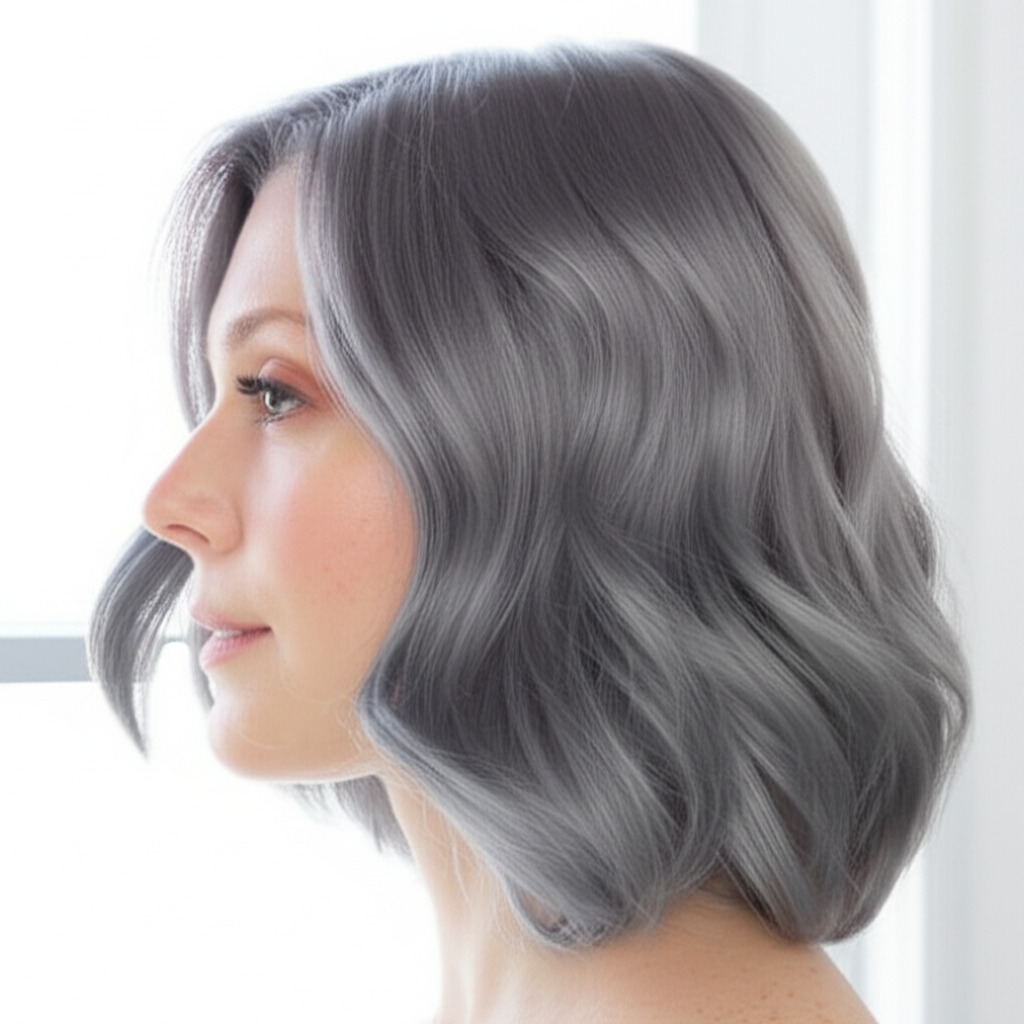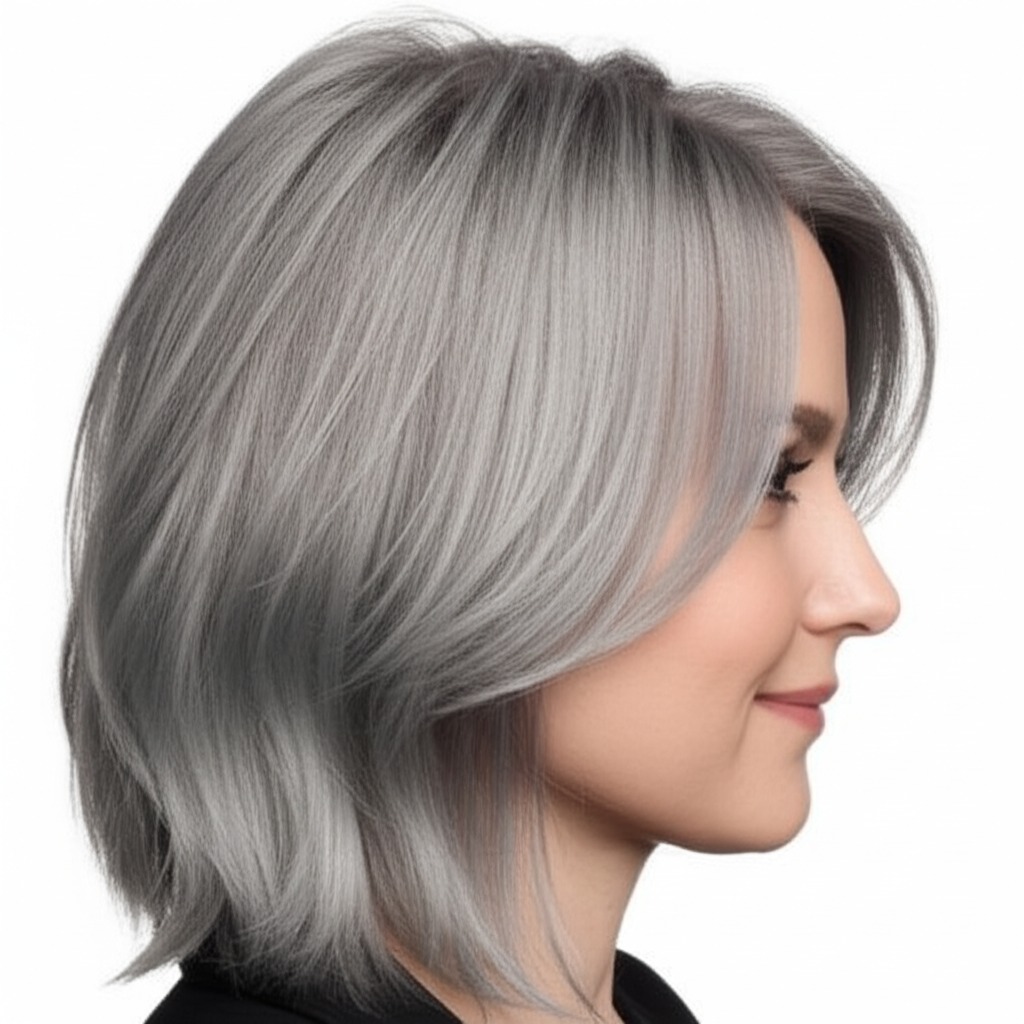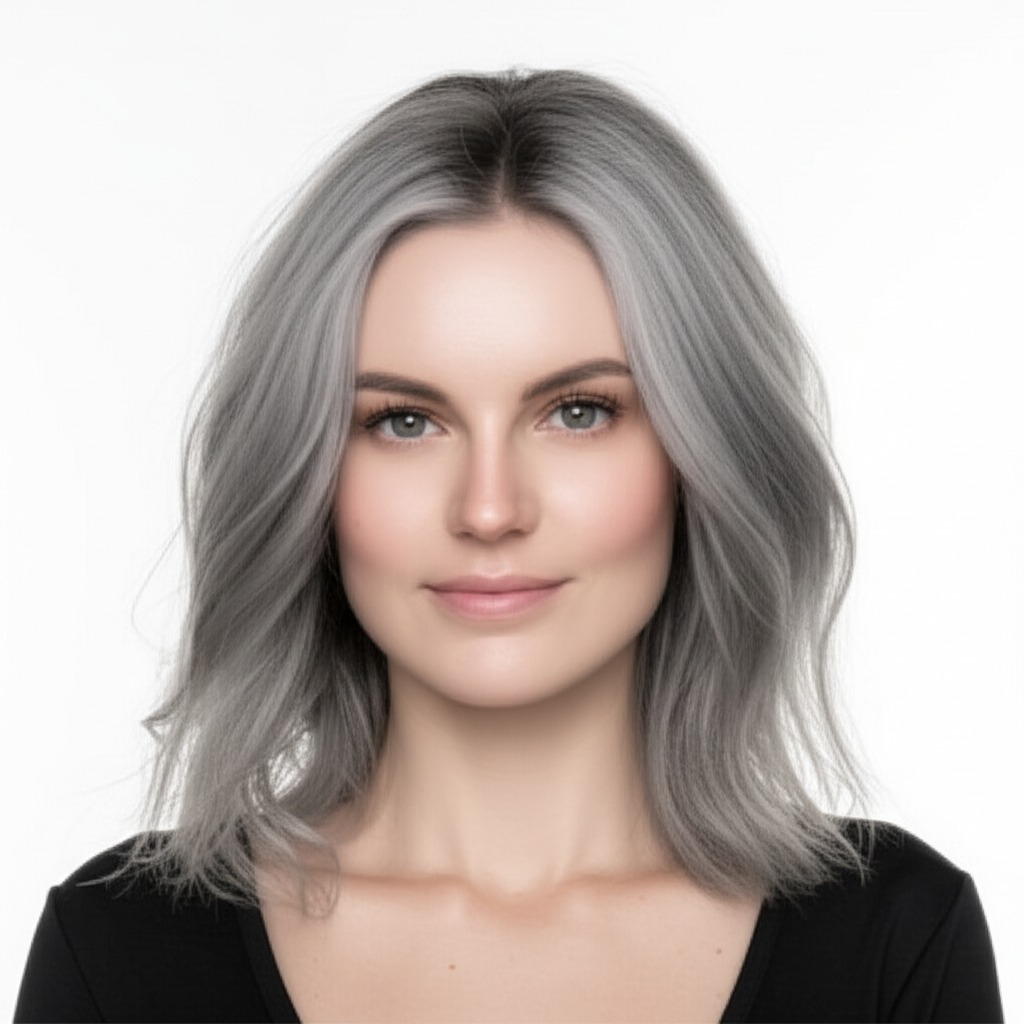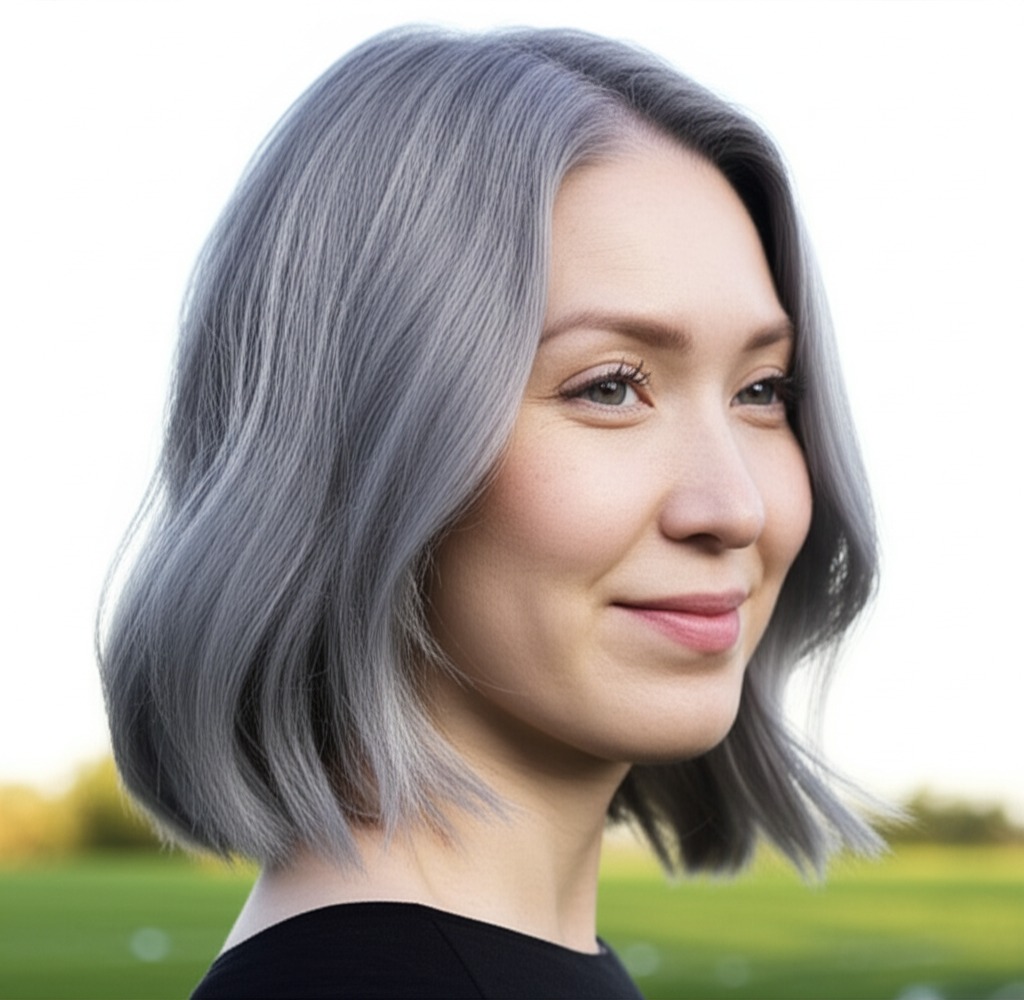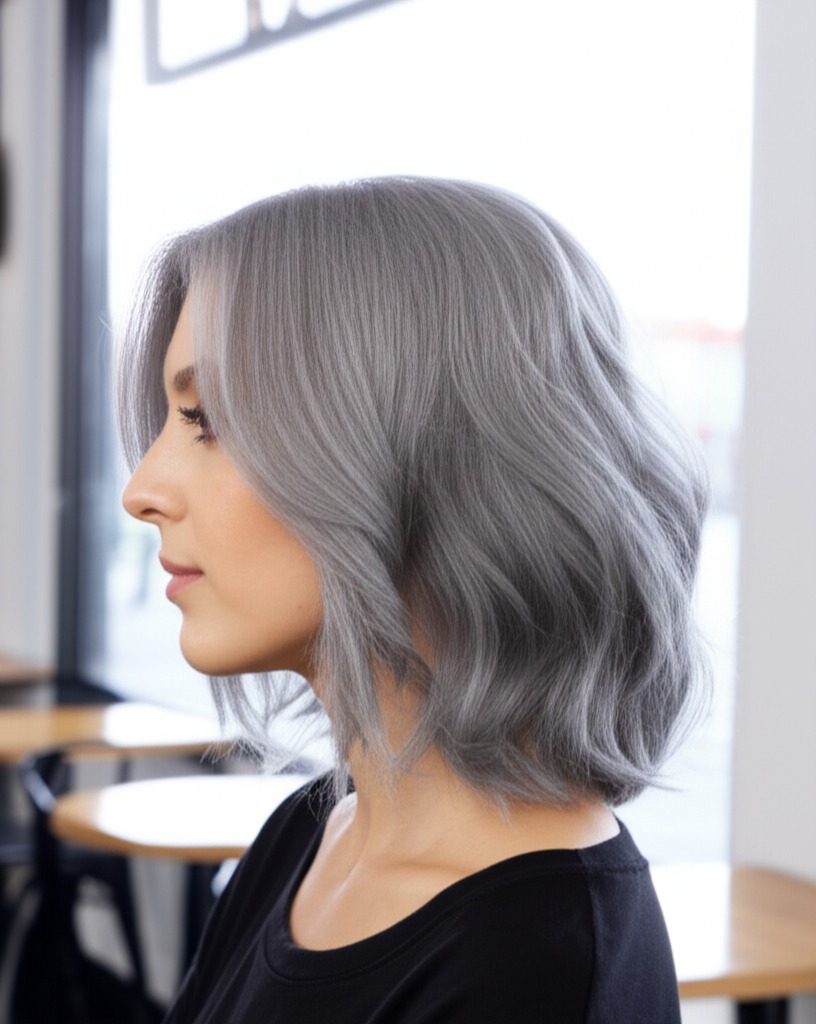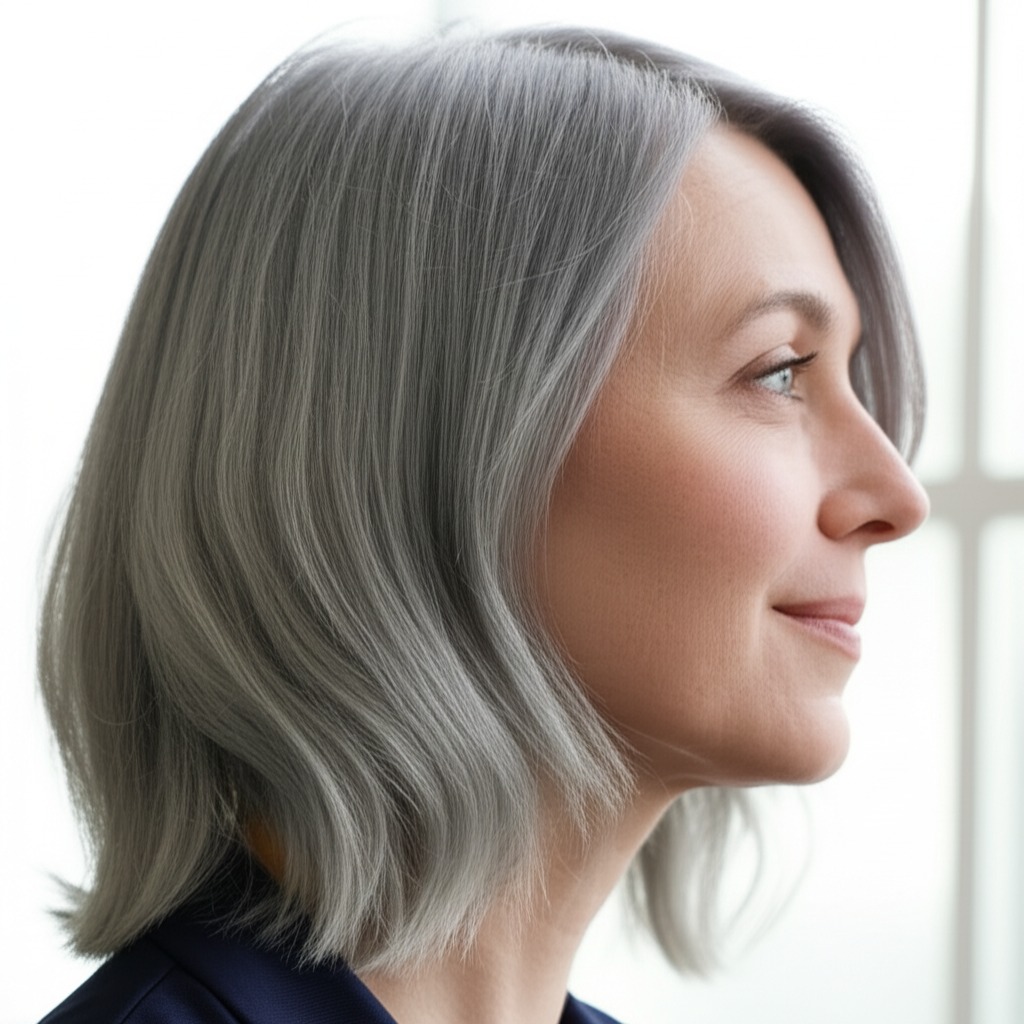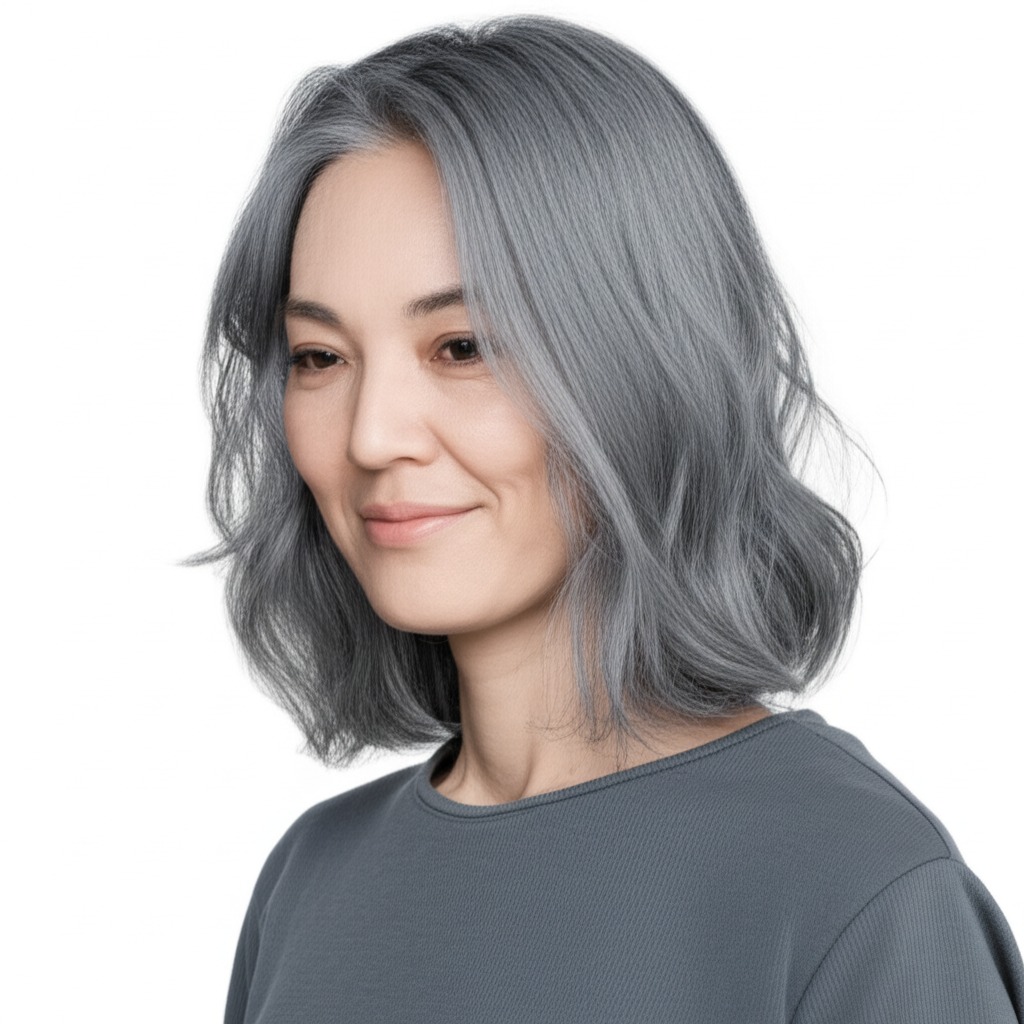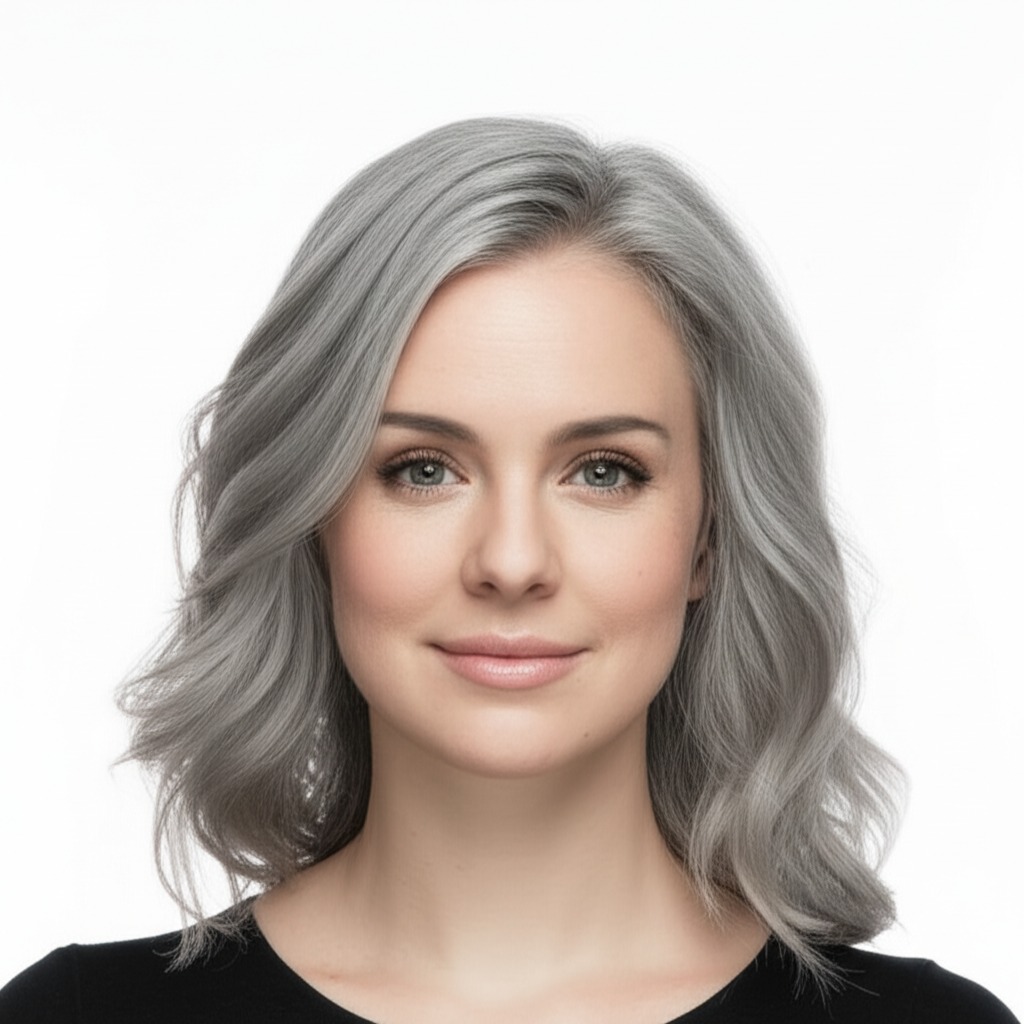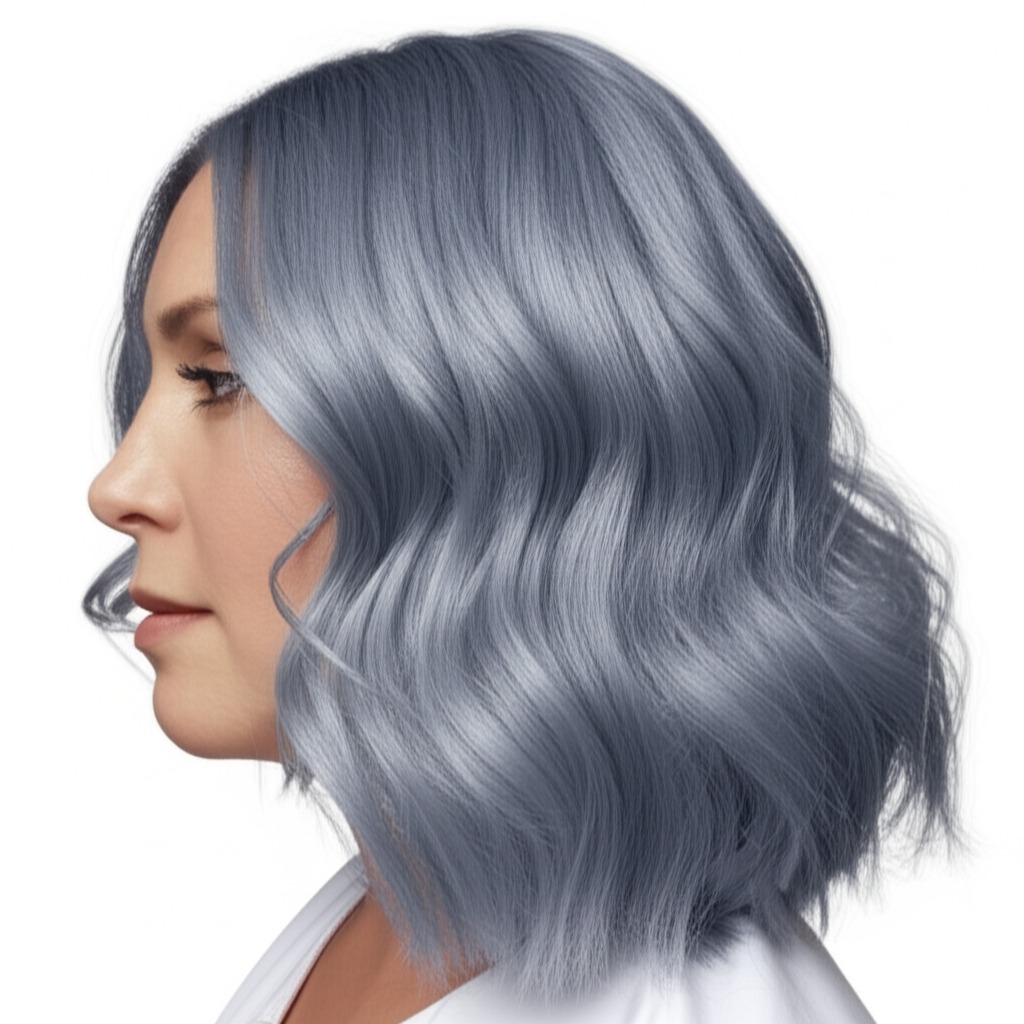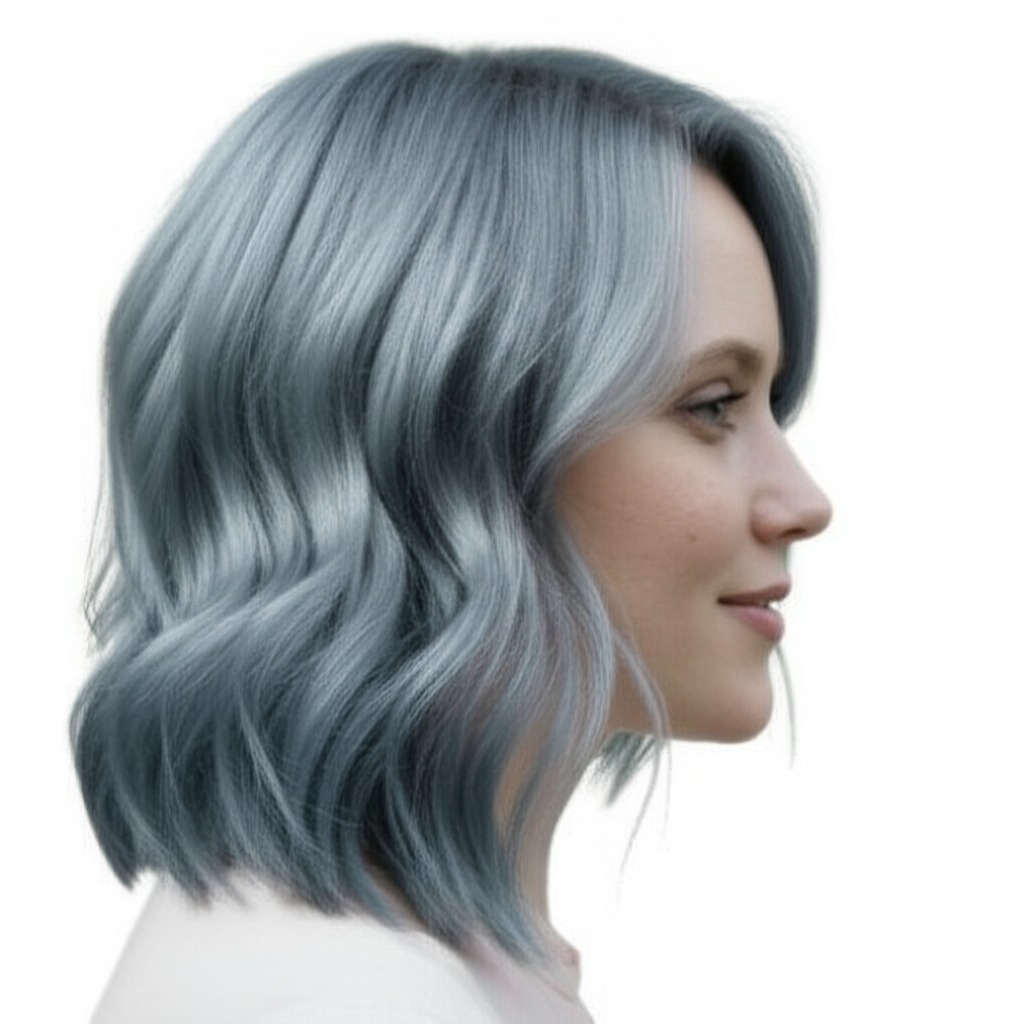#Embracing the Cool Sophistication of Ashy Gray Hair
Ashy gray hair is having a moment! It’s striking, modern, and exudes an effortless cool vibe. But achieving this coveted look isn't as simple as picking up a box dye. This guide will break down everything you need to know about ash-gray hair color – from understanding the shade itself to keeping it looking its best.
#1. Understanding Ashy Gray: Shade Definition
Ash gray isn’t just “gray.” It’s a complex blend of cool tones, and getting it right requires precision. Let's break down what that means:
- Undertone: This is key. "Ash" refers to the undertone – it's cool! Think silvery-blue or smoky gray. There are no warm (golden/yellow) notes in a true ash gray.
- Depth (Levels): Hair color levels range from 1 (blackest black) to 10 (lightest blonde). Ashy grays typically fall between level 7 (medium ash brown-gray) and level 9 or even 10 (lighter, almost silver-gray). The higher the number, the lighter the shade. A darker ash gray will appear more muted and grounded; a lighter one is bolder and brighter.
- Variations: You’ll see variations like "smoky ash," which might have slightly deeper tones for added dimension, or “platinum ash,” which leans towards a very light, almost white-gray.
#2. Who Does Ashy Gray Flatter?
While anyone can wear it with the right preparation and expertise, certain features tend to make this color particularly stunning:
- Skin Tone & Undertone: Ash gray looks best on people with cool or neutral skin tones. This means your skin has pink, red, blue, or violet undertones. If you have warm (golden/yellow) undertones, ash gray can sometimes wash you out and make your skin look sallow. A patch test is always recommended before committing!
- Eye Colors: Cool-toned eyes like blues, grays, greens, and even cool browns often complement ash gray beautifully. The contrast creates a striking visual impact.
- Natural Level Starting Points: This is crucial. Ashy gray requires significant lightening for most people.
- Levels 1-4 (Dark Brown to Dark Blonde): Expect multiple salon visits and potentially longer processing times to achieve the desired lightness, as you’ll need to lift your hair significantly.
- Levels 5-7 (Medium Brown to Light Brown): This is a more manageable starting point – still requiring lightening, but less drastic than darker levels.
- Levels 8-10 (Light Blonde to Platinum Blonde): You're already closer! A toner or gloss might be all that’s needed to achieve the ash gray tone.
#3. Technique Options: Achieving the Look
There are several ways a stylist can approach an ashy gray transformation:
- Single-Process: This is a full, even color application. Best for those with already light hair (levels 8-10) or when aiming for a more uniform look.
- Highlights/Lowlights: Adding subtle highlights (lighter pieces) and lowlights (darker pieces) creates dimension and visual interest. Can soften the overall gray appearance, especially on darker starting levels.
- Babylights: Very fine, delicate highlights that mimic natural sun-kissed streaks. A gentle way to introduce lightness before committing to a full ashy gray transformation.
- Gloss/Toner: This is your best friend! Toners and glosses deposit color without lightening, allowing you to adjust the undertone of existing hair or enhance an already light base. Essential for achieving that perfect ash gray hue.
- Balayage-Effect vs Solid Color: A balayage effect (hand-painted highlights) creates a softer transition and more natural look, especially on darker starting levels. A solid color application provides a more uniform, bolder appearance.
#4. Maintenance & Longevity: The Commitment
Ashy gray requires dedication! Here's what to expect:
- Wash Frequency: Less is more! Washing too often strips the color and dulls the shine. Aim for 2-3 times per week max.
- Toner Refresh: This is essential. Toners fade quickly, especially on porous hair. Expect a toner refresh every 4-8 weeks, depending on your hair's condition and how quickly it fades.
- Root Growth Pacing: As your natural root color grows in (which will likely be darker), the contrast can become noticeable. Talk to your stylist about strategically placing highlights or lowlights to blend the roots more seamlessly. Some prefer a stark line for a bolder look!
- Budget/Time Planning: This is not a budget-friendly or quick process, especially if starting from a dark base. Expect salon visits every 6-8 weeks (for color and cut), with each appointment potentially taking 2-4 hours initially, and less as your hair lightens.
#5. Seasonality & Pairing With Cuts
Ashy gray’s coolness can be adapted to suit any season:
- Bob/Lob: A sharp bob or lob (long bob) amplifies the modern edge of ash gray.
- Long Layers: Soft, long layers create movement and dimension, softening the intensity of the color.
- Pixie Cut: A pixie cut with strategically placed ashy gray highlights can be incredibly chic and edgy.
- Seasonal Tweaks: In winter, a slightly cooler, more muted ash gray feels appropriate. In summer, consider adding subtle platinum highlights for a brighter, sun-kissed effect.
- Event/Occasion Picks: Ashy gray is perfect for:
- Work: A darker, more subdued ash brown-gray conveys professionalism and sophistication.
- Daytime: Lighter ashy grays are stylish and eye-catching.
- Evening: A platinum ash with a glossy finish creates a glamorous look.
- Weddings: Consider adding subtle rose gold or lavender undertones for a softer, more romantic feel (while still maintaining the cool base).
#6. At-Home Care: Protecting Your Investment
Proper at-home care is vital to extending your color's vibrancy:
- Sulfate-Free Shampoo & Conditioner: Sulfates strip away moisture and fade color quickly.
- Clarifying Cadence: While sulfate-free products are essential, buildup can still occur. Use a clarifying shampoo (specifically designed for color-treated hair) every 4-6 weeks to remove residue.
- Heat Protection: Always use a heat protectant spray before using any hot styling tools (blow dryer, straightener, curling iron).
- Color-Safe Styling Products: Choose products specifically formulated for color-treated hair.
- Product Checklist: Sulfate-free shampoo & conditioner, color-safe heat protectant, deep conditioning mask, clarifying shampoo (occasional use), leave-in conditioner.
#7. Common Pitfalls: Avoiding the Color Fails
- Brassiness: The biggest enemy! Ash gray is designed to eliminate warmth. If your hair starts looking yellow or orange, it’s pulling brassy tones. Purple shampoos and conditioners can help neutralize this (but use sparingly – too much can create a purple tint!).
- Banding: Uneven color application, often due to inconsistent lightening or product buildup. A skilled stylist will avoid this through careful sectioning and even processing.
- Patchiness: Can occur if the hair isn't properly lightened before applying the ash gray toner.
#8. Pros & Cons: Weighing Your Options
Pros:
- Modern & Stylish: Ashy gray is undeniably trendy and chic.
- Versatile (with adjustments): Can be adapted to suit different skin tones and styles with strategic highlighting and toning.
- Striking Contrast: Creates a beautiful contrast against many eye colors and skin tones.
Cons:
- High Maintenance: Requires frequent salon visits for toner refreshes.
- Fade Risk: Ash gray fades quickly, especially if not properly cared for.
- Significant Lightening Required: Can be damaging to the hair, particularly when starting from a dark base.
#9. Salon Consultation Script: Setting Expectations
Before committing to ashy gray, have an open and honest conversation with your stylist! Here are some prompts:
- "I'm interested in achieving an ash gray color. What level of lightening will be required given my current hair color?"
- "Can you explain the different techniques (single-process, balayage) and which would best suit my hair type and desired look?"
- “What is your plan to prevent brassiness?”
- "How often do you recommend toner refreshes, and what will that cost approximately?"
- "Let's discuss a realistic timeline for achieving this color transformation."
- "Can we perform a strand test to ensure the ash gray tone looks good with my skin tone?"
#10. FAQs: Your Ashy Gray Questions Answered
- Is ashy gray damaging? Lightening always involves some degree of damage, but proper care and preventative measures (like protein treatments) can minimize it.
- Can I achieve ash gray at home? While possible for those with already light hair, achieving a truly even and accurate shade is best left to professionals.
- How do I prevent my ashy gray from turning green in the rain? This happens when minerals in rainwater react with the color molecules. A good quality sealant can help protect against this.
- What’s the difference between ash blonde and ash gray? Ash blonde is a lighter, warmer shade than ash gray. Ash gray has more of a cool, smoky undertone.
- Will ashy gray make my hair look dull? Not if you maintain it properly! Glosses add shine and vibrancy.
- Can I go back to my natural color after having ashy gray? Yes, but it will require significant correction and potentially multiple salon visits. It's best to discuss a plan with your stylist before committing to the ash gray transformation.
This guide provides a comprehensive overview of achieving and maintaining ashy gray hair. Remember that every individual’s hair is unique – consulting with a skilled colorist is essential for personalized advice and stunning results!
